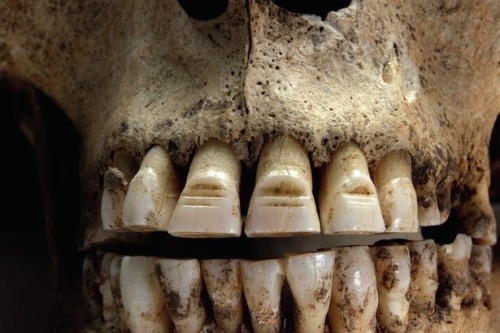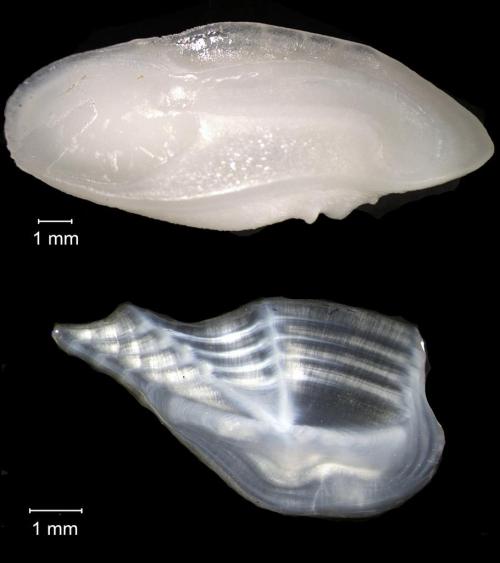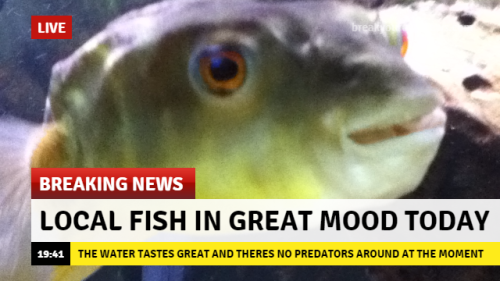By TINA HESMAN SAEY

by TINA HESMAN SAEY
SAN DIEGO — Cell biologists are taking clues from marching ants, flocking birds and other animals to learn how groups of cells move through the body.
Such studies are yielding insights about cell movement during development as well as the spread of cancer. Learning about cells’ social interactions may give researchers new ways to peer pressure cells into good behavior.
Cell biologists have traditionally studied individual cells or how groups of physically connected cells move. It’s only in the past few years that researchers have begun to regard cells as individuals with collective behavior. Taking cues from the linked movements of animals helps researchers “understand how cells, which everybody assumed had minds of their own, could possibly move as a group,” says Brian Stramer, a cell biologist at King’s College London.
Developmental biologist Roberto Mayor and colleagues have collected evidence that the migration of some important developmental cells is akin to the movement of swarming locusts. Mayor, of University College London, described the mass migration of neural crest cells December 13 at the annual meeting of the American Society for Cell Biology.
Neural crest cells are developmentally flexible cells in embryos that help form the bones and cartilage of the face, some nerves and brain cells, smooth muscle and other tissues. Some scientists have proposed that changes in early movements of these cells may lead to juvenile physical features in domesticated animals (SN: 8/23/14, p. 7).
Like locusts that cringe away from nipping neighbors, neural crest cells repel each other thanks to a process known as “contact inhibition of locomotion,” Mayor and colleagues found. Avoidance can increase the ability of cells to move in groups; cells that move astray and bump into a neighbor change course and move in the right direction again. A large crowd governed only by avoidance tactics, though, tends to break into smaller cliques, the researchers discovered in computer simulations. Cells are not just repelled by each other; they are also often attracted to other cells. That attraction causes cells to play follow-the-leader. On its own, attraction produces a group of cells that don’t get very far, computer simulations showed. A balance between avoidance and attraction produces the most efficient mass migrations, the simulations suggest.
(excerpt - click the link for the complete article)
More Posts from Llamaslikesciencetoo and Others

Viking men were also heavily tattooed but their most striking and fearsome fashion statement was their gnashers.
They would file horizontal lines into the enamel on their front teeth and paint in red resin. Gareth Williams (curator of the exhibition, Vikings: life and legend) says: “That’s like your punk sticking a safety pin through his nose. It would have been very uncomfortable and it’s quite deliberately saying ‘If I’m prepared to do this to myself, what am I going to do to you?’.” (Source)






Diving with a Great White: Not so frightening after all

Physical Activity Linked to Reduced Alzheimer’s Risk and Greater Gray Matter Volume
Whether they jog, swim, garden or dance, physically active older persons have larger gray matter volume in key brain areas responsible for memory and cognition, according to a new study by researchers at the University of Pittsburgh School of Medicine and UCLA.
The research is in Journal of Alzheimer’s Disease. (full open access)

An unexpected visitor washed up on the shore of Port Fairy’s East Beach — and beachgoers refused to let him suffer. Instead, they did everything in their power to get him the help he needed.

Vaterite … from fish ears to crystal lattices
Deep within the ear of a fish you will find a little bone, an otolith. This bone acts as part of the sensory system of the ear, part accelerometer, part gravity sensor, part sound sensor. Otoliths are formed from calcium carbonate minerals, and different species of fish exploit different types of CaCO3 mineral. These CaCO3 “polymorphs” all have the same chemistry, but the arrangements of atoms within the crystal lattice of each are different, just as diamond and graphite are two polymorphs of carbon. Usually, a fish otolith grows as aragonite, sometimes as calcite, a different polymorph of calcium carbonate, and sometime as the third CaCO3 polymorph, vaterite.
Keep reading




The Greenland shark, Somniosus microcephalus, is a member of the “sleeper shark” family. It moves very slowly around the deep ocean.
They grow to enormous sizes – in some cases more than 5 metres (16 feet) long – and live in very cold waters in the far north Atlantic, sometimes at the surface but often as deep as 1,800 metres (1.1 miles). They cruise along at 0.74 metres per second, or about three-quarters of a mile an hour.
It was already known that they can live for more than 200 years, but new research has shown that is literally only half the story.
When the oldest shark researchers studied was born (the Greenland shark gives birth to live young, not eggs), the Pilgrims had only recently settled in Massachusetts. Europe’s Thirty-Year War was in its infancy. James I sat on the throne of England. It lived through the English Civil War, the Great Plague and Fire of London, the American Revolution, the Napoleonic Wars, both world wars, and the entire nine-season run of Seinfeld.
Continue reading.
In this short video, augmented reality startup company Magic Leap used their cool technology to make 3D magic happen in a school gym.

This species, named after the enormous warts on the male’s face, is one of the rarest pig species on Earth.
-
 be--awesome reblogged this · 9 years ago
be--awesome reblogged this · 9 years ago -
 llamaslikesciencetoo reblogged this · 9 years ago
llamaslikesciencetoo reblogged this · 9 years ago -
 globalissuesandawareness reblogged this · 9 years ago
globalissuesandawareness reblogged this · 9 years ago -
 soulconcept liked this · 9 years ago
soulconcept liked this · 9 years ago -
 effyeahevolution reblogged this · 9 years ago
effyeahevolution reblogged this · 9 years ago -
 bubblememories-blog liked this · 9 years ago
bubblememories-blog liked this · 9 years ago -
 ec196-blog liked this · 9 years ago
ec196-blog liked this · 9 years ago -
 girlmusings liked this · 9 years ago
girlmusings liked this · 9 years ago -
 startstopgo liked this · 9 years ago
startstopgo liked this · 9 years ago -
 dont-even-think-about-it-ho-blog liked this · 9 years ago
dont-even-think-about-it-ho-blog liked this · 9 years ago -
 shadowjess200 liked this · 9 years ago
shadowjess200 liked this · 9 years ago -
 shadowjess200 reblogged this · 9 years ago
shadowjess200 reblogged this · 9 years ago -
 krikrakrissa liked this · 9 years ago
krikrakrissa liked this · 9 years ago -
 kneesockseh liked this · 9 years ago
kneesockseh liked this · 9 years ago -
 rabengreif liked this · 9 years ago
rabengreif liked this · 9 years ago -
 calvitron liked this · 9 years ago
calvitron liked this · 9 years ago -
 doomroar liked this · 9 years ago
doomroar liked this · 9 years ago -
 54sterr liked this · 9 years ago
54sterr liked this · 9 years ago -
 memeticwarfare reblogged this · 9 years ago
memeticwarfare reblogged this · 9 years ago -
 memeticwarfare liked this · 9 years ago
memeticwarfare liked this · 9 years ago -
 jasminwnimsaj liked this · 9 years ago
jasminwnimsaj liked this · 9 years ago -
 krit-117 reblogged this · 9 years ago
krit-117 reblogged this · 9 years ago -
 minja1722-blog liked this · 9 years ago
minja1722-blog liked this · 9 years ago -
 dekuscrub-cw liked this · 9 years ago
dekuscrub-cw liked this · 9 years ago -
 istilldontunderstandthis reblogged this · 9 years ago
istilldontunderstandthis reblogged this · 9 years ago -
 shealwaysreads liked this · 9 years ago
shealwaysreads liked this · 9 years ago -
 daisy-tales3 reblogged this · 9 years ago
daisy-tales3 reblogged this · 9 years ago -
 ucresearch liked this · 9 years ago
ucresearch liked this · 9 years ago -
 llamafollower liked this · 9 years ago
llamafollower liked this · 9 years ago -
 space-sinnybun liked this · 9 years ago
space-sinnybun liked this · 9 years ago -
 ellec2012-blog liked this · 9 years ago
ellec2012-blog liked this · 9 years ago -
 yes-this-pussy reblogged this · 9 years ago
yes-this-pussy reblogged this · 9 years ago -
 yes-this-pussy liked this · 9 years ago
yes-this-pussy liked this · 9 years ago -
 isidoragon-blog liked this · 9 years ago
isidoragon-blog liked this · 9 years ago -
 veg73-blog liked this · 9 years ago
veg73-blog liked this · 9 years ago -
 oneknowsall-blog reblogged this · 9 years ago
oneknowsall-blog reblogged this · 9 years ago
Mainly interested in ecology, but also the entirety of science.
179 posts